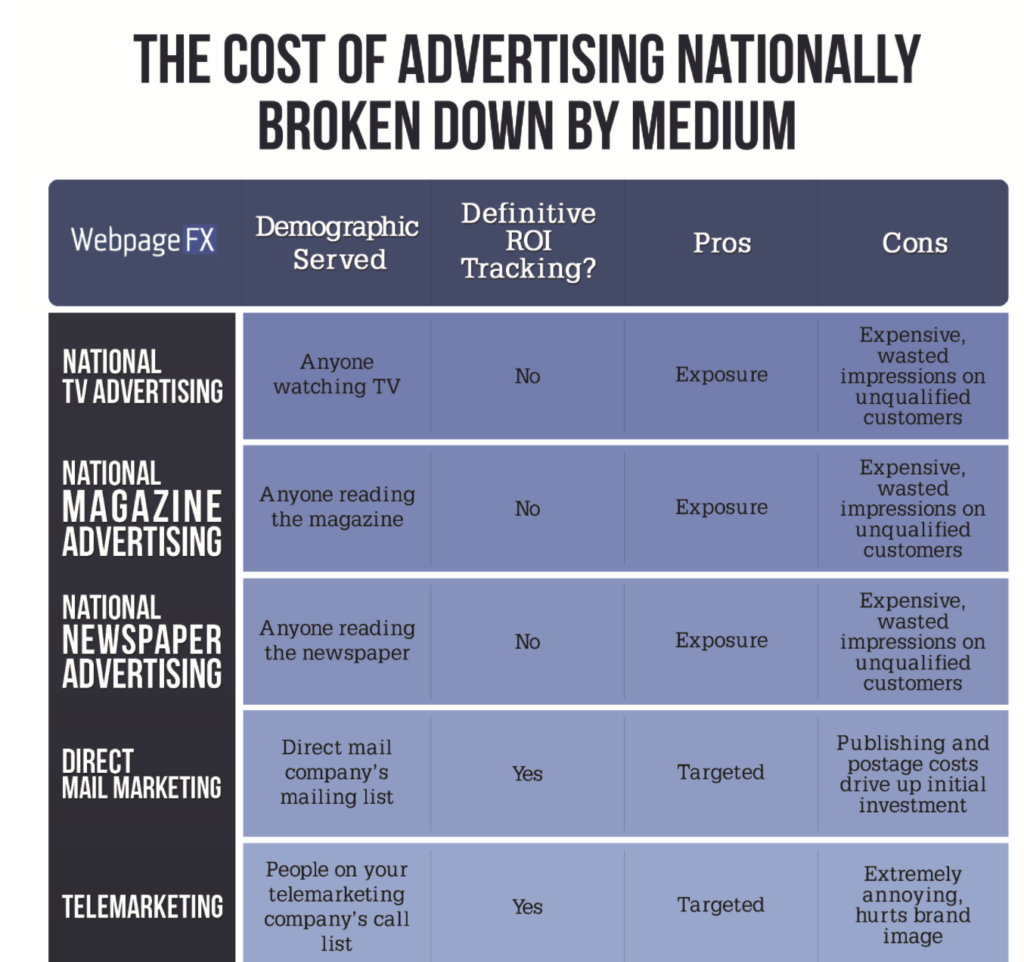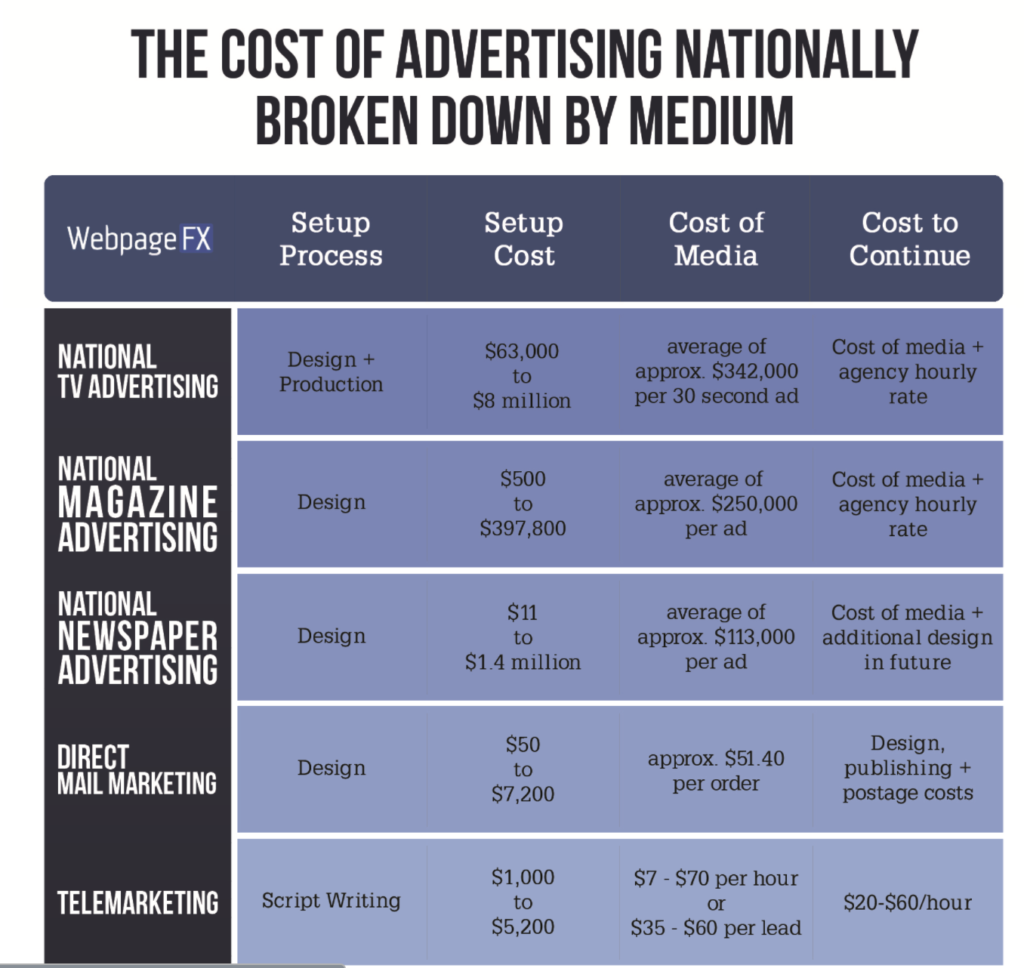The Online Advertising Vs Traditional Marketing conversion wouldn’t have been there, if it’s not for the circumstances. Online advertising, digital marketing, and the concept of Inbound marketing is gathering pace. Just not as fast and well-practiced as I’d like.
If you asked me just a few years ago on what the best kind of marketing was, My answer would have come straight off Philip Kotler’s School of thought.
Also, because this is also the age of Inbound marketing, I’d go with something like “The Optimal Marketing Mix” , “… a judicious mix of traditional advertising with inbound marketing”.
For small businesses and startups, however, digital marketing trumps everything. You are really better off just focusing on digital marketing and nothing else.
I really don’t know what you do for “marketing” right now but you shouldn’t be spending any effort, time, or money on traditional media like billboards, local newspaper ads, television, or Radio.
You are just wasting money right there. Here are some strong reasons why digital marketing makes for a compelling alternative to traditional advertising. The final take on Online advertising Vs Traditional marketing approaches:
The TL;DR version
- Traditional advertising is prohibitively expensive. Anyone who spent any kind of money on that will tell you just how your money pours out.
- You can’t just launch traditional ad campaigns by yourself. You’ll need agencies and entire teams of people to work for your business.
- It’s virtually impossible to track your ROI with traditional advertising of any kind (yeah, even with QR codes).
- Traditional advertising doesn’t allow you to dig into any kind of analytics nor would it let you do any kind of testing. For instance, how many leads did you sign up off those 15,540 flyers you distributed? If you did get leads from those flyers, did your local area downtown work better than the upmarket residential area?
- There’s virtually no single publication, television channel, or a new house that has the kind of reach, engagement, and audiences than Google, Facebook, or both (we aren’t even talking about Twitter, LinkedIn, mobile advertising inventory, and the phenomenally expansive Google Display Network.
Now, if you are interested, let’s get into details, shall we?
Traditional Advertising Expenses: Does money grow on Trees?
You’d only have to see this helpful infographic from Webpagefx to get a rough idea as to what it costs for you to do traditional advertising (it’s insane, stupid, and borderline stupid to even try).
With due credits to the team at webpagefx, I completely disagree with their estimated costs of “digital marketing” though.
Telemarketing sucks outright. Direct mail marketing, National newspaper advertising, magazine advertising, and national television advertising — they are all ridiculously expensive, no matter how you cut it.
No Control, all pain: You can’t do traditional advertising by yourself
Online advertising Vs Traditional marketing also leads you to believe that both are equal (like comparing apples to apples. It’s not.
Let’s consider print advertising: You’d need an advertising agency to understand your brief, determine your budget, conceptualize the ads, create the ads, find space on newspapers or magazines, and then publish the ads (if your ad agency agrees to do that).
If your ad agency only does creatives, you’d need to do some media buying (ridiculous again).
Depending on the different ways you plan to launch campaigns, you’d need to contact various agencies, publishers, outdoor media space agencies, radio, magazines, and god knows who else just to get your ads published.
Once the ads are published, they’d last “a day” at the most. You’d never know which ad in which newspapers placed on which page of the paper was getting you any responses (if any).
Really? Is this how marketing is done today?
No numbers, no fun: Analytics, Tracking, & Testing
Let’s just say you are a Mutual Fund company and you create an ad that’s going to be published on The New Yorker, The Chicago Tribunal, and The New York Times.
The ad is published on a Monday or a Friday. You get calls, thanks to those ads and your sales team gets leads for that day. They’ll do their job.
But wait. Which newspaper got you the most leads? What placements work and what don’t? Would page 1 work best, or page 3 or page 8? How many people saw the ads and how many people called?
Guess what? You have no clue.
You can warily see your $113,000+ cash depleting with nothing much to show for, eh?
For a while, we had hopes that may QR codes could bridge the divide between traditional advertising and digital advertising. Maybe we could add dedicated QR codes for our offline campaigns and we might be able to figure out what works and what doesn’t.
But just managing QR codes and track results this way calls for an entire in-house team on top of whatever resources a business needs to manage marketing and sales.
Well, thank you very much. Here’s the rub: Compare Online advertising Vs Traditional advertising and you’ll see that the old ways of doing advertising doesn’t allow you to track and tie-in the efforts to the money spent.
Traditional Media Reach? It’s tiny and Untargeted
One huge fallout with a typical Online advertising Vs Traditional marketing line of thinking will be this: Traditional advertising is expensive yes. But what’s more striking is that audience sizes are tiny, unsegmented, and un-targeted.
Media houses, newspapers, and magazines would normally sing a song about how many people their media reach out to — but that’s just an arbitrary number that reflects the exact number of people subscribed to a newspaper, a magazine, or a number of people expected to watch a television show.
Newspaper revenues and weekday circulation figures have been declining. Yet, they charge you ridiculous rates because they are desperate now and also the rates won’t make sense.
Consider this: The New York Times was awarded around 122 Pulitzer prizes. Good for them. So what’s in it for you, as a business?
Compare that to just Google and Facebook:
When it comes to reach, Facebook has about 1.39 billion users on platform with over half of them logging in for an average of 4 hours per day. When it comes to advertising to Facebook users, you can segment, target, and use layered profiling to reach exactly who you want to reach.
Google occupies about 75% of the search engine share in the world. More than 1.2 trillion searches are conducted per day on Google (and we aren’t even talking about the impressions and traffic share of Google’s Display Network).
We haven’t mentioned the total available inventory of impressions and media space for Mobile advertising, other standalone Advertising Real-Time Bidding Platforms, apps inventory, and several other media platforms available for businesses today.
Now, Online advertising Vs Traditional marketing: Is this even a comparison? Take it easy and stick to digital marketing unless your business demands otherwise. Period.


